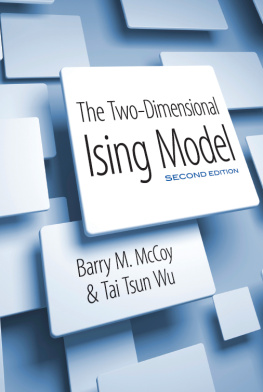Comets - Directed Polymers in Random Environments: École dÉté de Probabilités de Saint-Flour XLVI - 2016
Here you can read online Comets - Directed Polymers in Random Environments: École dÉté de Probabilités de Saint-Flour XLVI - 2016 full text of the book (entire story) in english for free. Download pdf and epub, get meaning, cover and reviews about this ebook. City: Cham, year: 2017, publisher: Springer International Publishing, genre: Home and family. Description of the work, (preface) as well as reviews are available. Best literature library LitArk.com created for fans of good reading and offers a wide selection of genres:
Romance novel
Science fiction
Adventure
Detective
Science
History
Home and family
Prose
Art
Politics
Computer
Non-fiction
Religion
Business
Children
Humor
Choose a favorite category and find really read worthwhile books. Enjoy immersion in the world of imagination, feel the emotions of the characters or learn something new for yourself, make an fascinating discovery.
- Book:Directed Polymers in Random Environments: École dÉté de Probabilités de Saint-Flour XLVI - 2016
- Author:
- Publisher:Springer International Publishing
- Genre:
- Year:2017
- City:Cham
- Rating:4 / 5
- Favourites:Add to favourites
- Your mark:
Directed Polymers in Random Environments: École dÉté de Probabilités de Saint-Flour XLVI - 2016: summary, description and annotation
We offer to read an annotation, description, summary or preface (depends on what the author of the book "Directed Polymers in Random Environments: École dÉté de Probabilités de Saint-Flour XLVI - 2016" wrote himself). If you haven't found the necessary information about the book — write in the comments, we will try to find it.
Comets: author's other books
Who wrote Directed Polymers in Random Environments: École dÉté de Probabilités de Saint-Flour XLVI - 2016? Find out the surname, the name of the author of the book and a list of all author's works by series.











 starting from
starting from  . Precisely, the random sequence S is defined on the probability space
. Precisely, the random sequence S is defined on the probability space  with the cylindric -field
with the cylindric -field  and a probability measure P x such that, under P x , the jumps S 1 S 0,, S n S n 1 are independent with
and a probability measure P x such that, under P x , the jumps S 1 S 0,, S n S n 1 are independent with 
 . In the sequel, P x [ X ] denotes the P x -expectation of a r.v. (random variable) X , and P 0 will be simply written by P .
. In the sequel, P x [ X ] denotes the P x -expectation of a r.v. (random variable) X , and P 0 will be simply written by P . is a sequence of r.v.s which are real valued, non-constant, and i.i.d. (independent identically distributed) r.v.s defined on a probability space
is a sequence of r.v.s which are real valued, non-constant, and i.i.d. (independent identically distributed) r.v.s defined on a probability space  such that
such that 
 the
the  -expectation of a random variable Y defined on
-expectation of a random variable Y defined on  and
and  the
the  -expectation of Y on the event
-expectation of Y on the event  . We will take
. We will take  the canonical space for definiteness.
the canonical space for definiteness. by
by 



 with the Hamiltonian H n . We stress that the random environment is contained in both Z n (,) and P n , without being integrated out, so that they are r.v.s on the probability space
with the Hamiltonian H n . We stress that the random environment is contained in both Z n (,) and P n , without being integrated out, so that they are r.v.s on the probability space  . The polymer is attracted to sites where the random environment is positive, and repelled by sites where the environment is negative.
. The polymer is attracted to sites where the random environment is positive, and repelled by sites where the environment is negative.
 , so that the polymer is supposed to live in (1 + d )-dimensional discrete lattice and to stretch in the direction of the first coordinate. Such a model is called directed . Each point
, so that the polymer is supposed to live in (1 + d )-dimensional discrete lattice and to stretch in the direction of the first coordinate. Such a model is called directed . Each point 